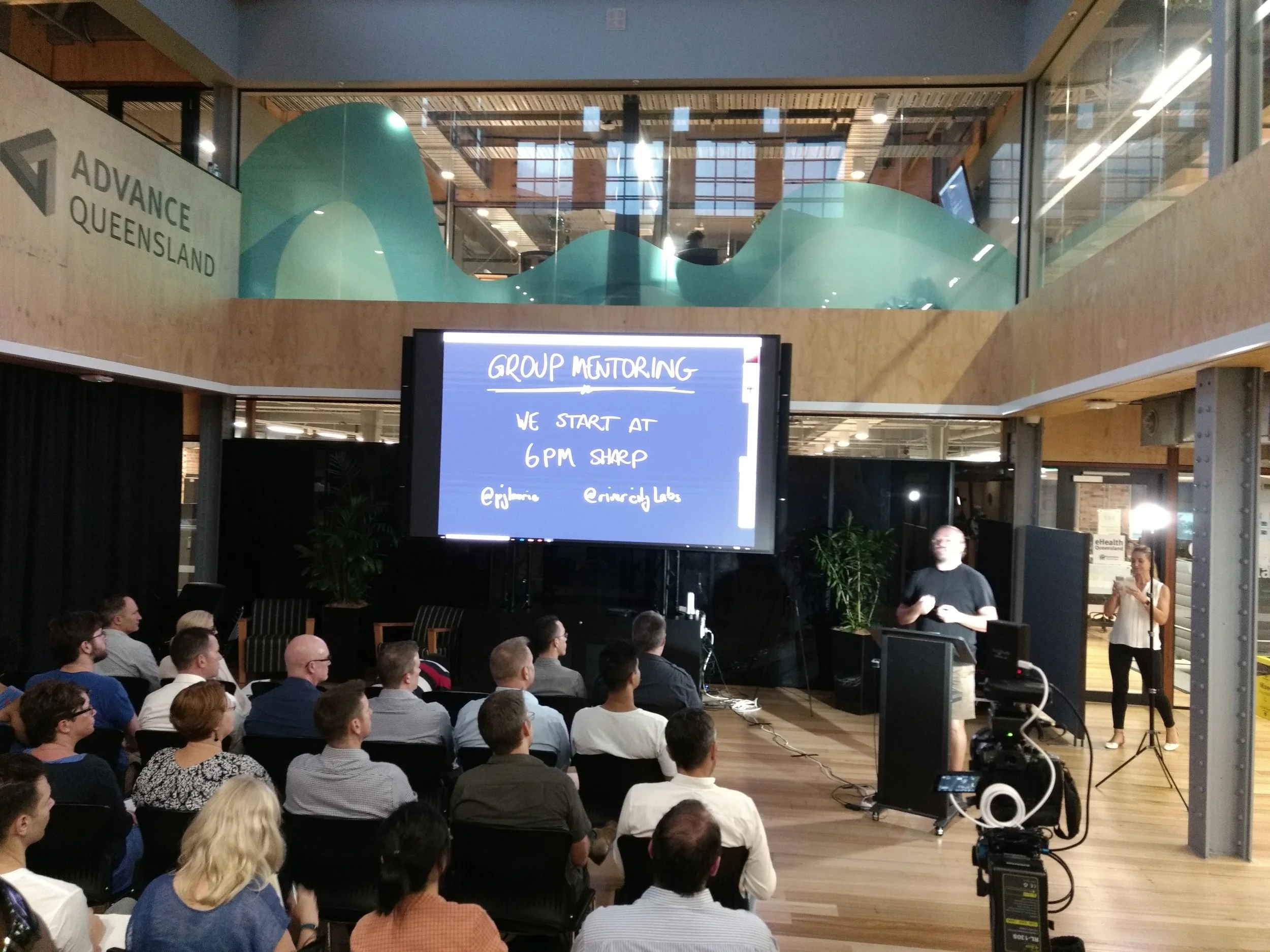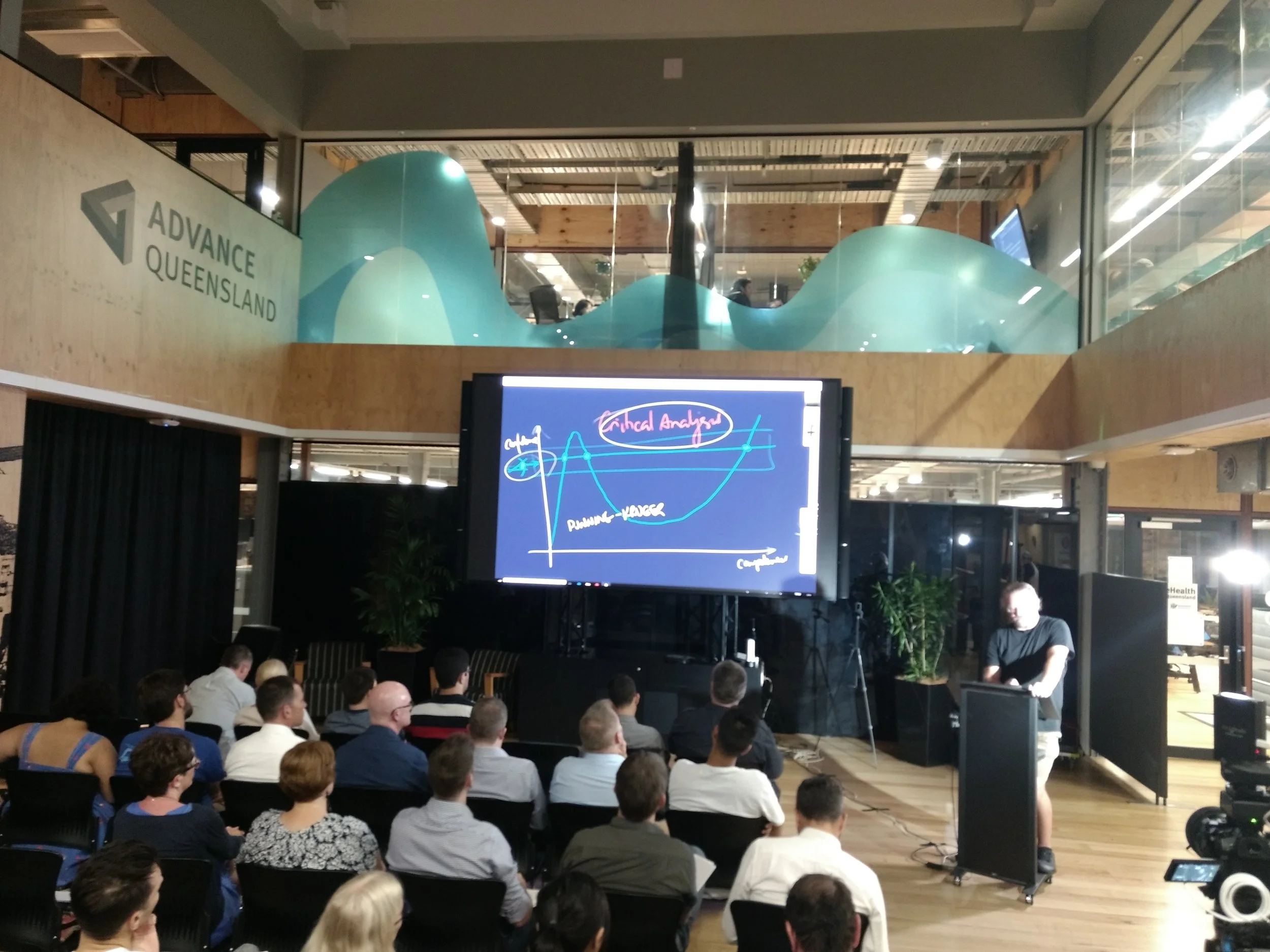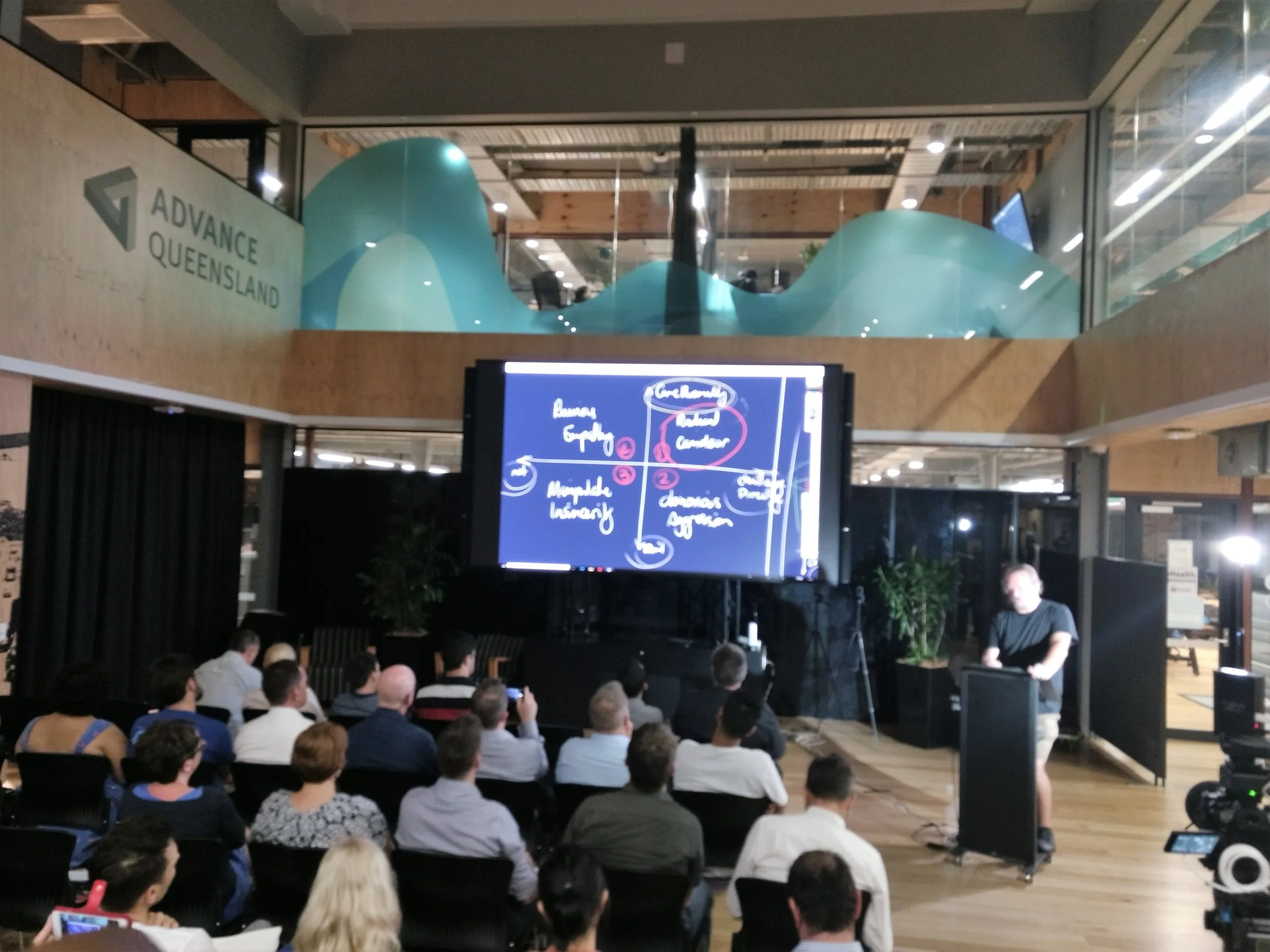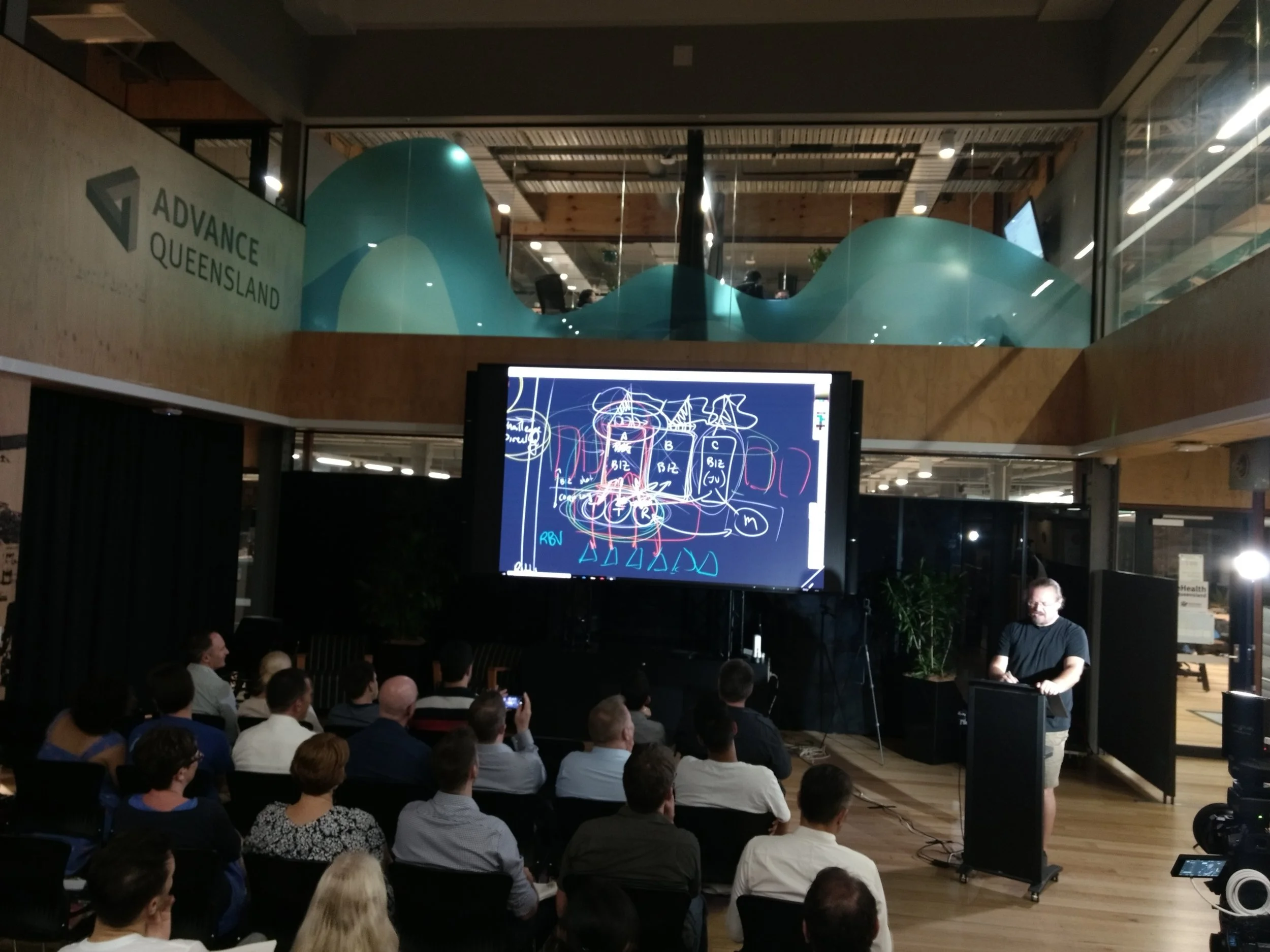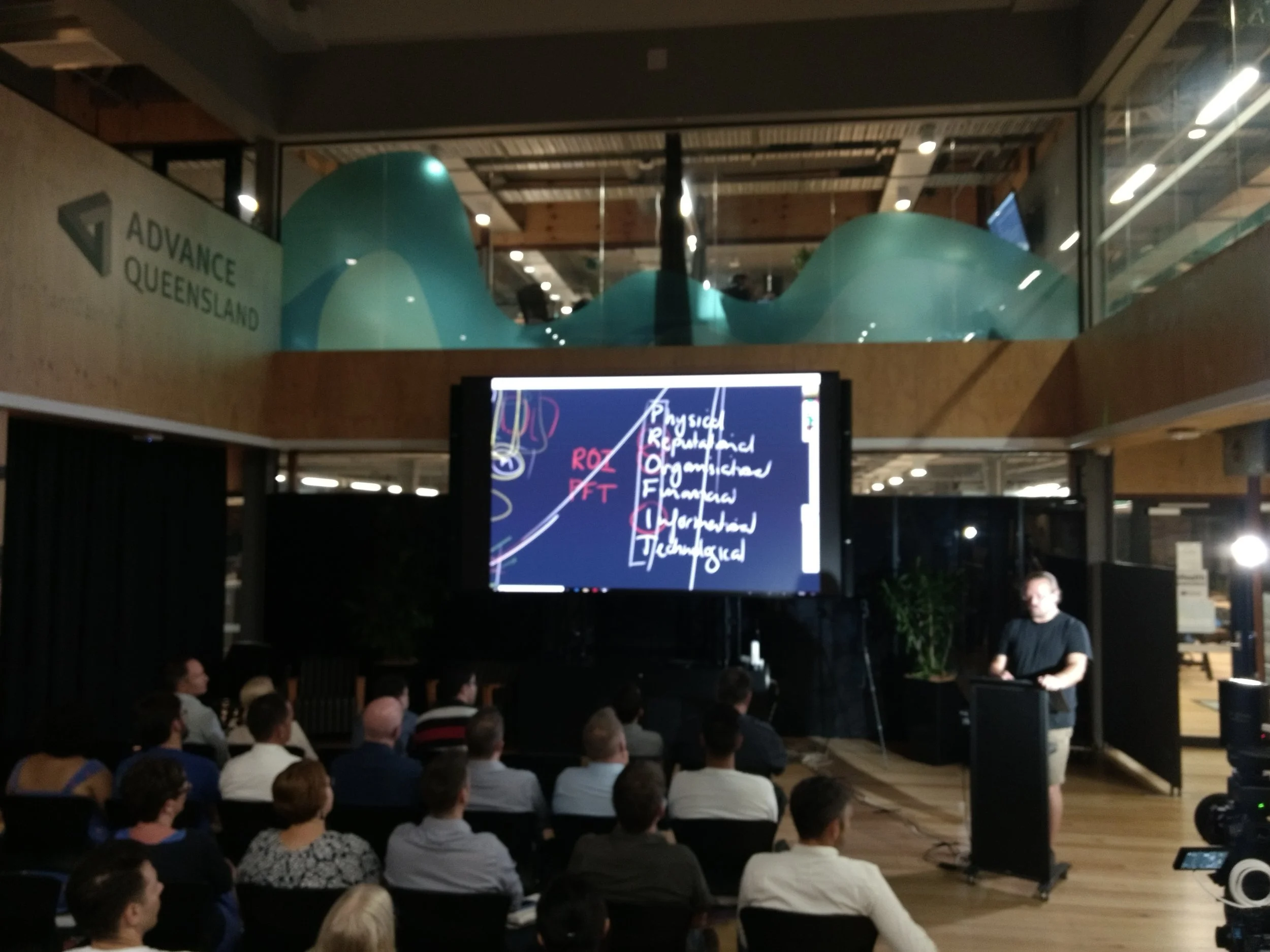Group Mentoring Session
Last Thursday, I attended a group mentoring hosted by Peter Laurie. I turned up with no set expectation but because the event crossed my social media and since I had met Peter through a different meet-up last week, I was curious to see what he had to say. It turned out to be one of the best sessions on start-ups and business in-general that I have ever attended!
Peter has an engaging way of delivery that made the topics easy to absorb. By their very nature, the topics were already interesting for an entrepreneur, but we all know that a bad delivery can spoil even the most interesting topics. So the fact that Peter is a great speaker was one of the big highlights of the evening. So what did I learn?
The first thing Peter covered had an unexpected overlap with my PhD in that it was all about perspective based on expertise. Namely, Peter talked about how new entrants into the start-up space may mistake false confidence for true expertise. Of course, the only cure for this issue is to critically analyse every piece of information we receive until we are ourselves expert enough in the space to know by instinct what is worth listening to and what is not.
The next topic Peter covered was 2 x 2 matrix regarding feedback developed by Kim Scott in her book Radical Candour. It was about the four types of feedback you can get about your work and ideas. The best is radical candour, which is delivered to you by people who care but challenges you directly. But the directness is not to tear you down but to help you refine and justify what you are doing. It also acts as a reality check.
By contrast, the worst is ruinous empathy, which might be great for your ego and anxiety but not great for your life and career. As it is empathy without any feedback and thus worse than manipulative insincerity because we can usually recognise when someone is neither caring nor sharing what they think about your ideas and work. As for obnoxious aggression, this is giving feedback, but without caring about the impact, it might have on the person receiving the criticism. Remembering that criticism is technically a neutral word when meant as the analysis and judgement of the merits and faults of a work. But when you are an adult, harsh criticism is still better than no criticism, which is certainly a good life lesson to learn.
The next topic covered was about focusing on core competency and thus being free to have multiple businesses. This was good to hear because there is prevailing wisdom in the startup community to not spread yourself too thin. But from my understanding, what Peter was suggesting was that if you know what your core competencies are, you can apply your competencies in multiples avenues without stretching yourself too thin. It also means you are not putting all your eggs in the same startup basket. But most importantly, no matter what happens with your startup fails, you are still walking away with an improved skill set.
The next section was about resources and the difference between resources that are spent over time: Physical, Financial and Technology, with technology being a depreciating resource due to the progress of technology. I.e. unless you spend time and money keeping your technological edge or your technology skills updated, they will fall behind. By contrast Reputation, Organisational advantages and Informational resources get stronger as they are used. This is probably the section I understood the least. So I'll have to do a bit more research on the PROFIT mnemonic.
The next section was about risk and reward and basically explaining why venture capitalists and angel investors behave the way they do. I.e. Explaining why do they even bother investing in the first place.
The discussion on funding was followed by a complex section on meaningful stats. I.e. stats that a VC can use to measure the chances of success of a startup, as opposed to vanity stats. Peter touched on the "AARRR! Metric" for startups in this section and followed it on by talking about the Kano Model for features. He added an extra feature type, called the "delighter feature", to the Kano Model. The "delighter" being a feature no one asked for because they couldn't imagine it but once added, they loved! The discussion on features naturally led to a discussion on pricing and a concept Peter termed "Foundation Partner", which is a way to using a small subset of early adopters to price your product or service accurately. I put all the slides for this part of the discussions together on the image carousel.
Missing from the photos is the diagram on feature creep or rather, how to introduce new features to your service without throwing the pricing tiers out of whack. The key take away was that you shouldn't just blindly add a new feature to all pricing tiers. Something that should be obvious but only once it is pointed out to you.
Overall, as I said at the start, the session was one of the best that I have ever attended. 10/10, I would recommend it to all budding entrepreneurs and even existing business people.

